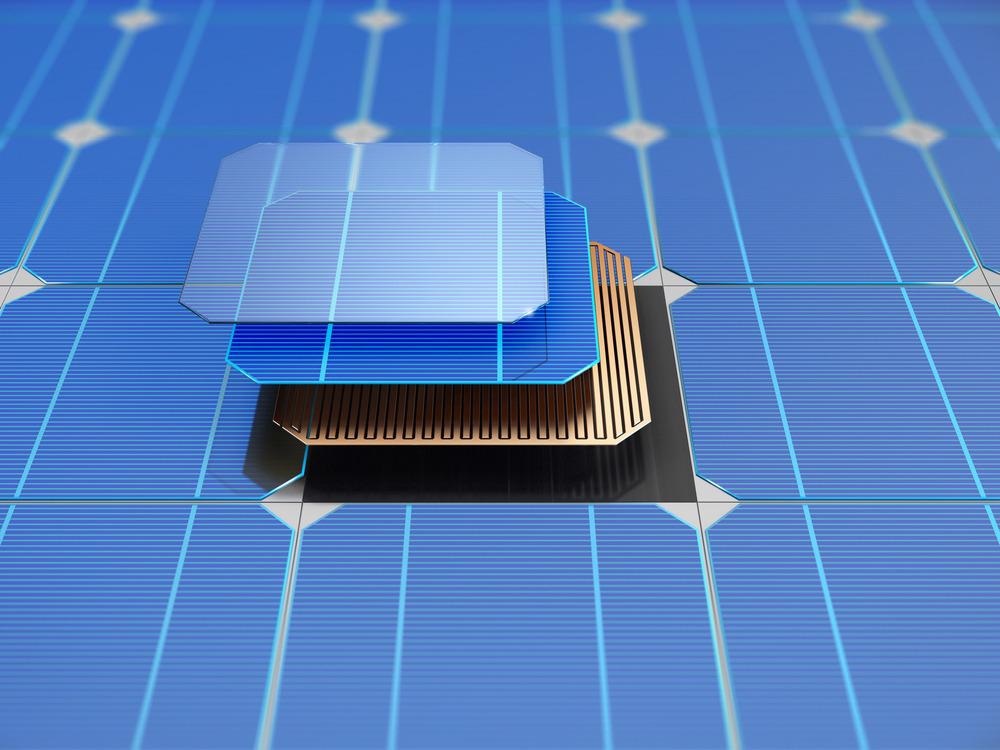Due to their potential use as embedded photovoltaic systems in buildings, glass panels, smartwatches, and automotive windscreens, semi-transparent solar cells (STSCs) are expected to address the increasing need for renewable energy.

Study: Advanced nanomaterials utilized as top transparent electrodes in semi-transparent photovoltaic. Image Credit: Iaremenko Sergii/Shutterstock.com
High-quality top transparent electrodes (TTEs) are necessary to fabricate efficient perovskite semi-transparent solar cells. A recent article in the journal Colloid and Interface Science Communications focuses on the fabrication of TTEs using nanomaterials such as graphene, carbon nanotubes (CNTs), and metal nanowires.
Importance of Perovskite Solar Cells
Environmental degradation caused by fossil fuels is the most pressing issue facing civilization today and requires a quick response. This issue can be overcome solely by maximizing the use of sustainable energy.
The amount of solar energy accessible on the planet is 6–7 times more than what mankind currently consumes. Solar technology has the potential to meet the global energy demand, which has accelerated growth in the area of photovoltaics fabrication.
Numerous tactics, including inverted design, solvent modification, and stack device fabrication, are being used to improve the effectiveness and stability of organic and perovskite solar cells.
Semi-Transparent Solar Cells in Building Integrated Photovoltaics
To maximize the efficiency of organic or perovskite solar cells, building-integrated photovoltaics can be employed. However, these integrated photovoltaics must allow natural sunlight to enter the building when needed. Certain types of organic or perovskite solar cells, such as semi-transparent organic solar cells, are essential to satisfy this requirement.
The thickness of the photoactive sheets is usually reduced to make semi-transparent solar cells (STSCs). STSCs can absorb sunlight from both ends and have a high efficiency of energy conversion. They can also be combined with other solar cells to create a twin structure for increased light collection efficiency.
Transparency and performance are inversely proportional to each other in STSCs. To get the greatest performance, the top and bottom transparent electrodes must be strategically positioned.
In most semi-transparent solar cells, the lower transparent conductor is usually ITO-coated glass, providing good visibility and conductance to the solar cell.
However, when used as a top transparent electrode, the same ITO can damage the photoactive and other intermediate layers. This issue prompted researchers to build and install TTEs utilizing a variety of sophisticated nanomaterials that do not influence the subsurface layers.
Advanced Nanomaterials as Top Transparent Electrodes
TTEs made of metal thin-films and metallic oxides are now commonly used to construct STSCs. While doping translucent metal oxide electrodes with abundant elements such as aluminum may lower material costs, costly deposition processes limit device manufacturing on a broad scale. Additionally, the mechanical features of doped metal oxides make them unsuitable for solar cell roll-to-roll fabrication.
Solution-phase deposition techniques for TTEs are needed to construct large-scale and versatile semi-transparent solar cells using roll-to-roll processes.
TTEs based on nanomaterials such as silver nanowires, graphene, and carbon nanotubes have excellent solution deposition capability and can also be used to fabricate flexible semi-transparent solar cells. However, despite the advantages of using nanomaterials as transparent electrodes, much optimization is still needed in many aspects of the solution deposition method.
Silver nanowires have great conductance and transmission but exhibit low durability when exposed to moisture and constant sunlight. Additionally, the silver nanowires' weak adherence to the lower-lying contact surfaces in STSCs limits their use in large-scale fabrication.
Graphene and carbon nanotubes, on the other hand, exhibit excellent conductance but have restricted applicability owing to the irregularity of the films formed as TTEs. Another issue with graphene is that it exhibits various flaws when generated using solution processes such as exfoliation or chemical oxidation. In the case of carbon nanotube-based electrodes, the device's limited mechanical adaptability is a significant limitation.
Future Perspective
Much effort has to be made to maximize the characteristics of TTEs fabricated from advanced nanomaterials. For example, an electrode composed of a composite of silver nanowires and other nanomaterials such as graphene and carbon nanotubes would significantly enhance the efficacy and optical characteristics of semi-transparent solar cells.
Positioning of the silver nanowires is also critical for achieving consistent conductivity throughout the film, which may be accomplished by a capillary printing method.
To create silver nanowire-based TTEs for semi-transparent solar cells, procedures such as capillary printing and hot-pressing deposition must be used in future applications.
Continue reading: Can this Novel Nanocomposite Improve Solar Energy Performance?
Reference
Singh, M. et al. (2021). Advanced nanomaterials utilized as top transparent electrodes in semi-transparent photovoltaic. Colloid and Interface Science Communications, 46. Available at: https://www.sciencedirect.com/science/article/pii/S221503822100203X
Disclaimer: The views expressed here are those of the author expressed in their private capacity and do not necessarily represent the views of AZoM.com Limited T/A AZoNetwork the owner and operator of this website. This disclaimer forms part of the Terms and conditions of use of this website.